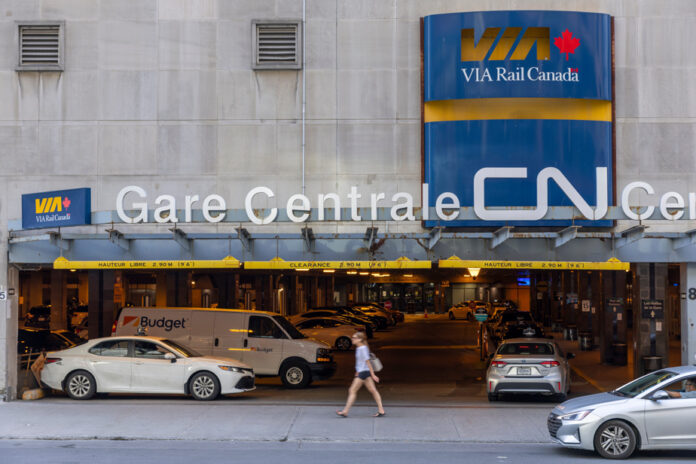Despite political pressure, high-speed train (TGV) “is not the right product” at present in Canada, warns a former VIA Rail manager. He calls on the Trudeau government not to give in to pressure, but rather to continue to favor a high frequency train (TGF) as a first step.
“When I put myself in the shoes of the taxpayer, what I see is that a TGV is an excellent product in certain circumstances. But these circumstances, in the Quebec-Toronto corridor, are not met. It’s not the right product at the moment,” says Pierre Le Fevre, who was senior planning and strategy advisor to VIA RAIL’s management for five years, until 2019.
He presented his vision of railway development in Canada on Wednesday, at the invitation of the Montreal Regional Environmental Council (CRE-MTL).
In February, Quebec Minister of Transport, Geneviève Guilbault, said she “favored” a TGV over a TGF. Prime Minister François Legault also spoke of the TGV as a “great project, as long as it is heavily funded by the federal government”. Municipal elected officials, including Laval mayor Stéphane Boyer, also openly supported the TGV.
Last fall, after soliciting comments from the private sector, Ottawa modified a criterion of the TGF project, now opening the door to the train going at more than 200 km/h on certain parts of the route, by requesting companies to make proposals to this effect.
However, according to Mr. Le Fevre, the fact is that “only 14% of trips are interprovincial” in the corridor targeted by a possible TGV. “Everything else would be done within each province. One, it’s fantastic at 500 kilometers, but below 300 the advantage is really less,” he judges.
“At some point, we have to take that into account, especially when we know that a TGV would cost three to five times more than a TGF,” argues the former manager, who today runs a government relations advice.
Mr. Le Fevre believes that building a TGV would also require many more sacrifices. “If we rely on the European Court of Auditors, it takes between 16 and 20 years on average to build, while a TGF would only take five years for a system that is just as modern.
According to the businessman, “each year without new service costs taxpayers money”, since VIA RAIL “costs the federal government approximately 300 million each year to stay alive”. With a TGF, “they would make money and could become profitable”, persists the main person concerned.
“I’m not anti-TGV at all, but what I’m saying is choose the right product for the right time. You start with your TGF. And after that, if you want to do a TGV, you do one too. But we have to do it as quickly as possible,” adds Mr. Le Fevre.
An analysis he published Wednesday, alongside his presentation, argues that “high-speed rail infrastructure is expensive and becoming more and more so. The lines we audited cost on average €25 million per kilometer,” the report reads. “Eight of the 30 projects we examined had been delayed by at least a year, and five lines, or half of the audited sample, had experienced delays of more than ten years,” we add.
According to the current version of the project, the TGF will have dedicated rails and should no longer share them with freight trains. This will reduce delays and speed up travel times, said Omar Alghabra, who was until recently the Federal Minister of Transport.















